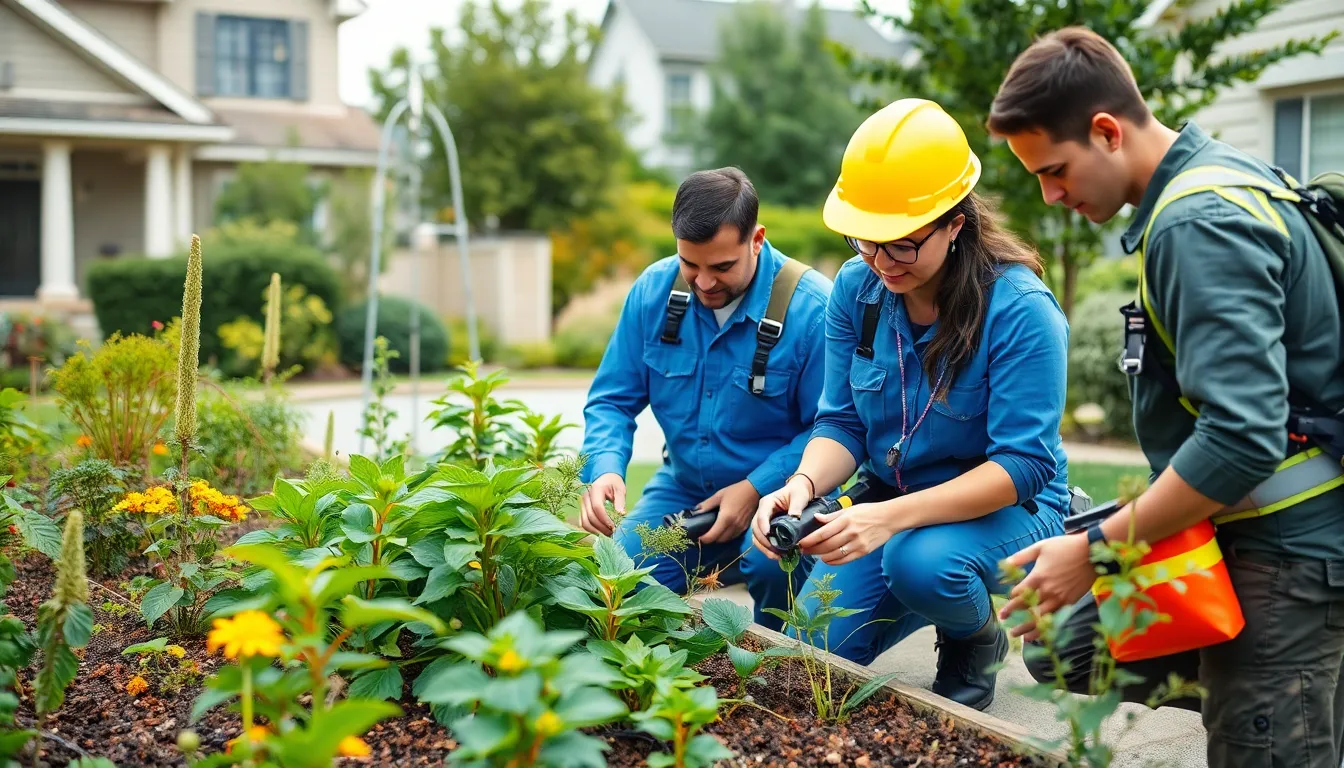When it comes to keeping your home bug-free, a pest control program is like hiring a tiny army of superheroes—minus the capes and flashy costumes. These unsung heroes swoop in to tackle pesky intruders that dare to invade your space. From ants marching like they own the place to rodents plotting their next heist, a well-structured pest control program ensures that your home remains a fortress against unwelcome guests.
But it’s not just about squashing bugs; it’s about creating a harmonious living environment. A solid pest control program combines prevention, monitoring, and treatment strategies to keep your home safe and sound. So why let pests crash your party when you can enlist the help of a professional program that knows how to send them packing? After all, a pest-free home is a happy home, and who wouldn’t want that?
Table of Contents
ToggleA Pest Control Program Is An Example Of Integrated Pest Management
A pest control program embodies the principles of Integrated Pest Management, also known as IPM. This approach focuses on sustainable practices that effectively manage pest populations while minimizing harm to humans, pets, and the environment.
Definition of Integrated Pest Management
Integrated Pest Management defines a strategic approach to pest control. It combines multiple methods to reduce pest damage through a detailed analysis of pest life cycles and environmental factors. Effective IPM emphasizes monitoring and the careful use of pesticides as a last resort, promoting a balanced ecosystem.
Components of Integrated Pest Management
Integrated Pest Management encompasses several key components.
- Prevention: This involves practices like sealing entry points, removing food sources, and maintaining clean environments.
- Monitoring: Regular inspections assess pest activity and identify potential problems before they escalate.
- Control Measures: This includes a range of strategies, such as biological controls, cultural practices, and, if necessary, chemical treatments.
- Evaluation: Analyzing the effectiveness of pest management strategies ensures continuous improvement.
Benefits of A Pest Control Program

A pest control program offers numerous advantages that extend beyond maintaining a bug-free home. These benefits can significantly impact both the environment and the economy.
Environmental Benefits
Pest control programs promote sustainable practices that help protect ecosystems. Integrated Pest Management (IPM) utilizes methods that reduce chemical usage, which benefits air and soil quality. Effective monitoring and treatment limit pest populations while minimizing harm to non-target species, including beneficial insects. Habitat preservation plays a role in maintaining biodiversity, as a well-managed space supports various organisms. Furthermore, a healthy environment leads to improved public health, as reduced pest populations decrease the spread of diseases.
Economic Benefits
Investing in a pest control program yields significant economic advantages. Property value increases when pest issues are managed effectively, making homes more attractive to potential buyers. Reduced damage to structures and landscaping saves homeowners money on repairs associated with infestations. Business owners also experience improved customer satisfaction, as a pest-free environment enhances dining and shopping experiences. Additionally, the costs associated with preventative measures tend to be lower than those of emergency treatments, leading to long-term savings.
Challenges in Implementing A Pest Control Program
Implementing a pest control program presents several challenges that require careful consideration and planning.
Resistance Management
Pest resistance poses a significant challenge for pest control programs. Over time, pests can develop resistance to certain pesticides, making treatments less effective. Effective resistance management strategies include rotating different classes of insecticides and combining chemical and non-chemical control methods. Monitoring pest populations regularly helps identify resistance patterns. Understanding these trends allows for timely adjustments to control strategies, ensuring long-term effectiveness in pest management.
Regulatory Considerations
Adhering to regulatory requirements remains crucial in pest control programs. Different states and localities impose various restrictions on pesticide usage. Staying informed about these regulations prevents potential legal issues and promotes responsible pest management. Documentation of pesticide applications and keeping up with safe handling practices are essential parts of compliance. Engaging with licensed pest control professionals enhances knowledge of proper procedures and reduces the risk of regulatory violations.
Case Studies of Successful Pest Control Programs
Various case studies demonstrate the effectiveness of pest control programs across different environments. In one notable instance, a large residential community implemented an Integrated Pest Management (IPM) strategy. This approach successfully reduced the presence of common pests like ants and rodents by over 75% within the first year of operation.
Another example comes from a university campus that faced ongoing issues with rodents and insects. By employing regular monitoring and combining preventive practices, the pest occurrences dropped significantly. Students reported a more comfortable living environment, which affirmed the program’s overall success.
A commercial establishment, such as a restaurant chain, adopted a comprehensive pest control initiative as well. Training staff on sanitation practices and implementing routine inspections led to a marked decrease in pest sightings. As a result, customer satisfaction increased, reflecting positively on the business’s reputation.
In agricultural settings, farmers have employed pest control programs with great success. In one case, a farmer utilized resistant crop varieties alongside targeted pest removal techniques. This combination improved yield by 30%, showcasing the importance of strategic pest management.
Additionally, a public health department in a metropolitan area focused on reducing mosquito populations. Through community engagement and regular spraying measures, they effectively lowered disease transmission rates. Residents noted fewer mosquito-related issues, illustrating the program’s community impact.
Each of these cases highlights the diverse applications of pest control programs and their contributions to health and quality of life. All demonstrate the need for tailored strategies that consider specific local challenges, advocating for continual evaluation and adaption to improve outcomes further.
A pest control program stands as a vital element in safeguarding homes and businesses from unwanted pests. By embracing strategies like Integrated Pest Management, individuals can achieve a sustainable and effective approach to pest control. This not only enhances the quality of living spaces but also promotes environmental health and economic benefits.
With the right knowledge and professional assistance, managing pests becomes a proactive endeavor rather than a reactive one. The success stories shared illustrate the significant impact of tailored pest control strategies. Ultimately, investing in a comprehensive pest control program ensures a healthier and happier environment for everyone.




